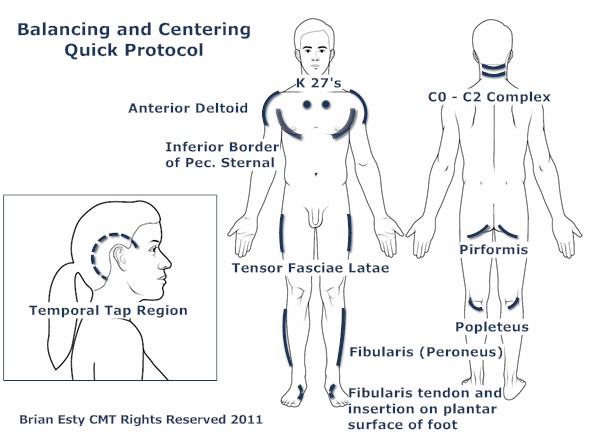Strength and coordination are a consequence of integrated neuro-motor control functions. These functions usually rely on small muscles that make fine adjustments to the body’s position and its movement vectors. Information that the control system receives regarding the muscle response influences how cautiously it will engage the large muscle groups in any activity. Additionally, our vision, proprioception, and sense of balance are actively involved. If there is any confusion in the integrated result of this sensory feedback, the control system will “back off” on any activity, resulting in reduced strength and coordination.
These neuro-motor circuits will pick up “noise” over time, which can be easily cleared. In a way, this is analogous to rebooting our processor. Successfully clearing this noise will result in immediate improvement in overall strength and agility, which also translates into greater confidence and a sense of well-being. In every session, no matter what the goal of the session is, I check all of the muscles indicated in the diagram. If I find congestion or tightness in any of them I will add at least part of the following protocol into the session. The information I get from these checks tells me a lot about what is going on with the client, and experience will tell you a lot too. This is a great balance to do before any competitive activity.
The clearing protocol is divided into two parts, clearing the muscle tension, and reprogramming the neuro-motor function. With practice, this entire protocol can be accomplished within 15 minutes.
1) Clearing the Muscles: Any method you use to clear tension from the musculature is appropriate. I use ischemic compression with induction, which is a common manual therapy technique. Spindle cell manipulations work very well also. Ultrasound with stretch is another method, which I have not used much, but have had success with. Please do not work beyond your scope of training, and always be cautious behind the knee and at the base of the skull.
With the client supine (lying on their back) check each region and release any tension found. Rub the K 27 points with slow, deep pressure for at least 15 seconds. After checking all of the zones, gently tap along the temporal line as indicated in the second illustration. Do this by tapping three times.
2) Linking foot and joint proprioception to vision and vestibular function. Have the client stand on a flat surface looking straight ahead at a horizontal or horizontal with a vertical line. (It is better to help them sit up as you want to minimize the body’s attempts to organize.) Check to make sure their knees are not locked. Gently at each layer of joint (knees, hips, shoulders, head) rotate the client first one way and the the other several times. Have them resist this motion. Use light force. You can also gently push them forward, backward, and to the sides, but not enough so that they tighten up. All the while the client is looking at the horizontal or crossed lines. Once you have done this, either standing or sitting, do the temporal tap three more times. Thats it!
N.B.: If the client chronically presents with recurring tension in some part or this muscle set, it speaks to a deeper organizational issue that may relate to Psoas, Sphenoid, Atlas, Cranial, or some other imbalance which should be checked out by an experienced Manual Therapist.
Sources: Dr. Leon Chaitow, Dr John Thie, Dr. Frank Chapman, Dr. Svetlana Masgutova, Sally Goddall, Tom Meyers. The inferior border of the Pectoralis Sternal muscles are points that I have discovered are effective and have not yet been found in the literature related to this type of organizational balance, so it is remotely possible that they are an original contribution on my part.

